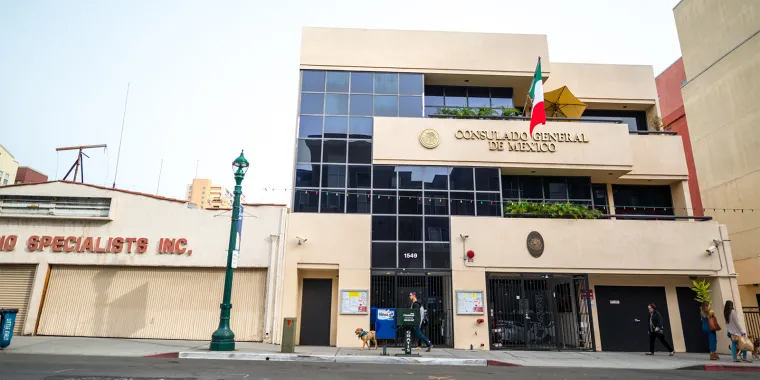An examination of this complex issue — and why it often gets lost in the ongoing border debates.
The right to own a firearm is guaranteed in the constitutions of both the U.S. and Mexico, but the chances of a Mexican citizen legally obtaining a gun in Mexico are slim.
Gun laws in Mexico are highly restrictive–there is only one gun store from which Mexicans can buy firearms legally in the entire country. Meanwhile, the U.S. has the largest legal gun market in the world.
But many of the guns legally purchased in the U.S. do not stay in the U.S.
Over 2.5 million illicit American guns have crossed into Mexico over the last decade. Over that time, more than 215,000 people have been murdered in Mexico.
According to the Center for American Progress, the U.S. is the primary source of weapons used in violent crimes in Mexico. In 2018, more than 20,000 of the 30,000 intentional murders in Mexico were committed with firearms.
Most of the guns trafficked into Mexico are military and assault style rifles. For years, the Mexican government has urged the U.S. to reinstate the Violent Crime Control and Law Enforcement Act of 1994, which made it “unlawful for a person to manufacture, transfer, or possess” a semi-automatic assault weapon. The law was adopted with a sunset clause and expired in 2004, even though the majority of Americans supported a ban at the time.
Today, 67% of Americans support a ban on military and assault-style weapons.
The semi-automatic, military style weapons that cross the U.S.-Mexico border, which were formerly banned under U.S. federal law, are now legal unless banned by state or local law. Arizona, for example, has not banned semi-automatic weapons, nor does the state require private sellers to initiate a background check when transferring a firearm.
More than 90% of Americans support background checks for all gun sales, yet a loophole in federal gun laws–known as the “private sale exemption” or “gun show loophole”–exempts unlicensed sellers from having to perform a background check before selling a firearm. This exemption helps legally purchased U.S. guns easily find their way into the hands of gun traffickers.
For some in Mexico, firearms trafficking is just another way to earn a living. Traffickers can purchase firearms in the U.S. and turn around to sell them in Mexico. They can get upwards of three times what they spent in Arizona at a gun show or through a private U.S. seller. Organized crime and drug trafficking operations take advantage of this supply chain and traffic both in bulk and little by little.
Between 2011 and 2016, over 70% of the 106,000 guns used in violent crimes in Mexico originated in the U.S. Those 160,000 guns represent a small fraction of the total number of weapons crossing the border from the U.S. into Mexico. In 2019, around 28,465 weapons, mostly handguns, were legally sold to Mexico. Yet, it is estimated that between 2010 and 2012, nearly 213,000 legally purchased firearms in the U.S. were illegally smuggled across the U.S.-Mexico border. These 213,000 firearms represented 2.2% of arms sales in the U.S. during that time, valued at around $200 million.
U.S.-sourced guns are not only contributing to lethal crime and political instability in Mexico, but also Central America. From 2014 to 2016, 49% of guns used in the commission of a crime seized in El Salvador, and 45% seized in Honduras, were originally purchased in the U.S. This supply chain leads to the displacement of Central Americans fleeing violence in their home countries.
Those fleeing often make dangerous journeys through Mexico to ultimately seek asylum in the U.S., where they meet a host of difficulties including record heat in the Sonoran Desert making the trek even more dangerous, a difficult-to-navigate asylum system, and pandemic-era restrictions on the review of asylum cases.
In March, the U.S. House passed a bill requiring universal background checks for firearm purchases. To date, the Senate has failed to pass HR 8.





